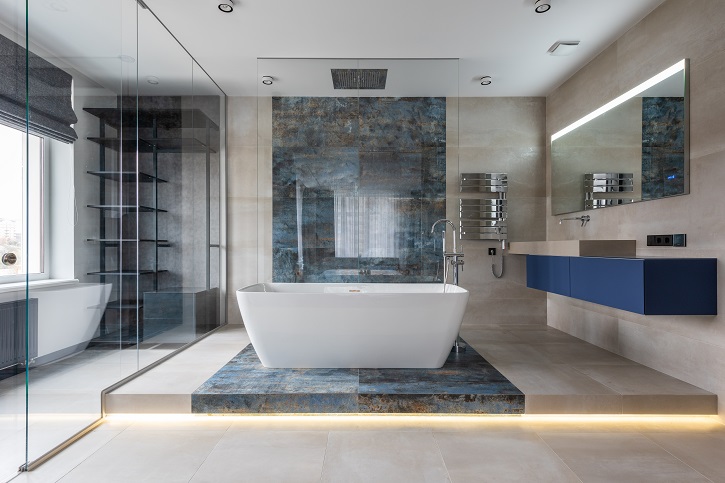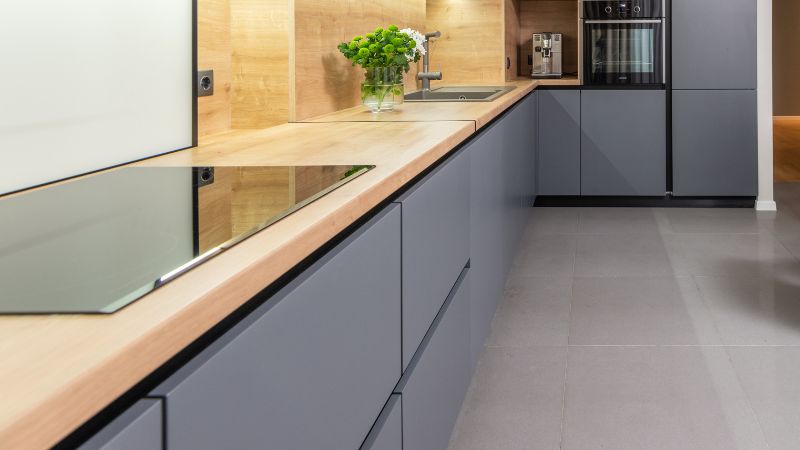
- By: charbhujatiles
- Jul 08, 2022
Tiles are an underappreciated building material that is usually used in the kitchen, bathroom, bedroom, etc. However, tiles have become more popular over time due to the numerous possibilities accessible and the variety of textures and patterns that are now available!
They can freshen up any place with their colors and textures because they are now applied to many surfaces in creative ways. Due to the superior products and services provided, Deco stone Design has developed a brand for itself.
The variety of available tiles may surprise you if you've never attempted a tiling project. The most popular types of tiles are ceramic and porcelain, but there are also glass, cement, metal, and stone tiles, to name a few. It's further complicated by the fact that not all tile types are appropriate for all projects, and of course, you must take your budget into account. It's difficult to avoid feeling a little overwhelmed, so we did the legwork for you.
Our specialists will go through 10 distinct tile kinds that are frequently used in homes so you can choose the right ones for your project now or in the future. For a redesign, you'll love for years to come, learn which tiles are best for each type of home project.
1. Ceramic tiles
Since ceramic tile may be used in a variety of settings, it is one of the most popular types of tiles in homes. They are simple to clean and don't hold onto germs, ceramic tiles are frequently used in kitchens and bathrooms.
How to identify a ceramic tile?
Because ceramic tiles have a porous clay backing, you can tell if a tile is ceramic by dabbing some water on the back of it and seeing if it soaks in. Ceramic tiles are non-porous on the top because they have a glass coating.
Also, make sure you get the distinction between glazed and unglazed as well. Glazed ceramic tiles offer greater protection for flooring with a longer lifespan whereas unglazed ceramic tiles give off an artistic, rustic appearance.
2. Porcelain tiles
The most popular tile right now is porcelain tile because it is essentially a form of ceramic tile. Porcelain tiles have the advantage of being even more resilient and long-lasting than ceramic tiles, allowing them to be employed in both residential and commercial settings.
How do identify a porcelain tile?
Put some water on the back of a porcelain tile; if it does not soak in, it is a porcelain tile. This is because porcelain is vitrified, which means it is non-absorbent.
The installation of porcelain tile can be challenging, Although DIY installation is possible, Castellano claims that many homeowners overlook the requirement for an adhesive when installing this kind of flooring.
3. Marble Tile
Marble tiles, despite being expensive, instantly give a room a touch of refinement and elegance. Marble needs a lot of maintenance to keep it looking perfect. Marble tile is also difficult to clean and, like any stone, is prone to scratches and stains.
How do you recognize a marble tile?
Since marble is a naturally occurring stone that must be cut, there is no molding on the reverse like there would be with porcelain or ceramic tiles. The vein system in marble runs from the front to the rear of the tile and is often polished.
Marble is frequently used in aesthetic elements like shower floors, columns, and backsplashes rather than worktops by homeowners. Utilizing it for minor applications will also allow your budget to relax.
4. Granite tiles
Because of its natural flecks, granite is a natural stone that resembles marble in appearance and texture, yet there are several important variations.
Due to its durability and stain resistance, granite is a form of tile that maintains its stunning appearance throughout time. It might be a common choice of tile for cabin-style interiors.
How to identify a granite tile?
A polished granite tile has a speckled appearance that can be seen on the front, sides, and back of the tile. The rear of the tile also has a smooth surface.
5. Mosaic Tile
Since mosaic tiles are available in such a wide variety of sizes, colors, patterns, and even materials, you can exercise your creative interior design muscles.
Mosaic tiles can soon appear antiquated depending on the sort of tile you select. As you choose the tile and the area where it will be laid, keep that in mind.
How to identify a mosaic tile?
Glass, stone, and ceramic are the most frequently utilized materials in these tiles, which are formed of a variety of materials. They are usually small in size and arranged in groups to produce a stronger visual impression. They are primarily utilized for outdoor design, floors, walls, and furniture.
6. Limestone Tile
Another type of natural stone tile is limestone. It is reasonably robust and will maintain its good condition over the medium to long term. It fits in well in a variety of home interiors and has a light, natural appearance.
Living rooms, baths, and foyers frequently include limestone tiles. It is preferable to avoid using them in the kitchen because of their susceptibility to stains.
How can I tell whether a tile is limestone?
A matte-finished tile with a smooth back and a tint that is typically light, limestone has a look that is somewhat stained like marble. It is also extremely dense.
Also check: Premium Tiles Collection – Designer Wall and Floor Tiles
7. Travertine Tile
Travertine tile gives a unique, organic look like that of limestone. Like other varieties of natural stone tile, it is easily damaged by moisture, stains, and traction. Travertine tile needs additional maintenance and resealing from time to time because of this.
Travertine tiles work best in areas with less traffic in a house. Additionally, many designers may put these tiles on walls rather than floors to prevent scratches, etching, or stains.
How to identify a travertine tile?
Travertine tiles contain a variety of wavy colors throughout. Limestone and travertine could have a resemblance. Another name for travertine is travertine limestone.
Also check: All about Garage Floor Tiles with Different Types
8. Slate tile
This sedimentary stone naturally forms into thin horizontal layers and contains a mixture of quartz and shale. Quarries can use the rock to make smooth and distinctly textured tiles by hitting it to shatter it and separate the layers.
The stone is a good option for outdoor tile and paver applications because of its natural rustic appearance. Slate may be applied in a variety of settings and has a highly refined and elegant style.
How to identify a slate tile?
The layers that make up a slate tile give it a highly rustic appearance. The colors of slate range from black and blue to green, and the sizes of the layers can be irregular.
Also check: Different Tiles You Should Look at for your Restaurants
9. Resin Tile
Resin tile is a great option, to combine the styles you want. These tiles have a gorgeous appearance and are waterproof. Additionally, since you may create your tile designs, they are ideal for DIYers. Resin is especially well-liked for its 3D patterns, which can mimic the appearance of water and stones.
One disadvantage of resin tile is its propensity to chip and fade over time, especially when exposed to sunlight. The bathroom and mudroom are examples of water-prone places where resin flooring is advised. They work well as accent pieces and backsplashes as well.
Also check: What Are the Best Non-Slippery Tiles for a Bathroom?
10. Quarry Tile
Quarry tile is created in a method that is quite like bricks using ground resources (though technically stronger). Quarry tile is created by combining crushed minerals such as feldspar, clay, and shale, which are then baked at temperatures above 2000 degrees.
They derive their name from the location of the ground minerals: a quarry, these tiles are inherently dense, nonporous, and water-resistant with a very low water absorption rate since they are fired at exceptionally high temperatures. They can either have a glaze applied or be left unfinished. They don't need to be sealed, which is an additional advantage.
Also check: 5 Hottest Eye Catching Tiles Trends for 2023
Conclusion
One of the best benefits of tiles is their versatility—they can be used in many different ways depending on where they are placed. For example, if you have a limited budget, you can choose to purchase cheaper tiles. However, if you want something that looks high-end, you need to spend more money on tiles.








